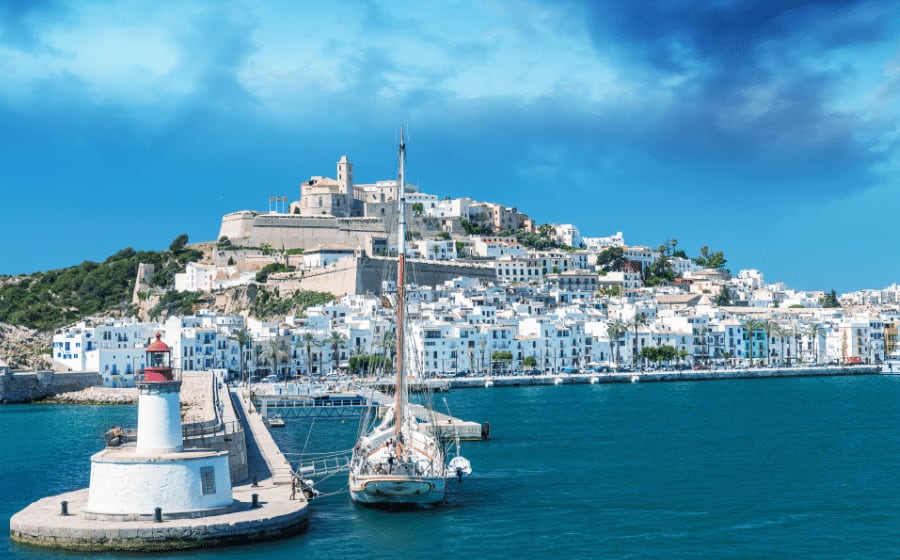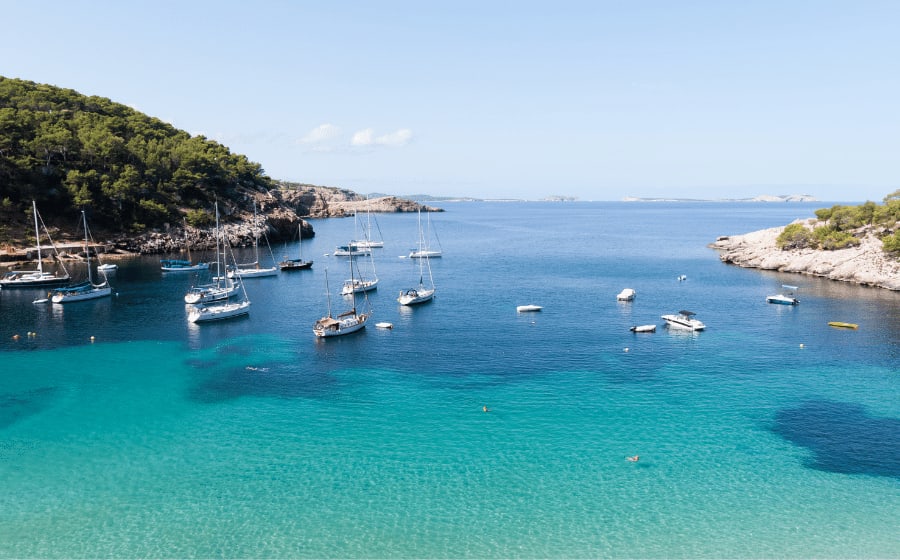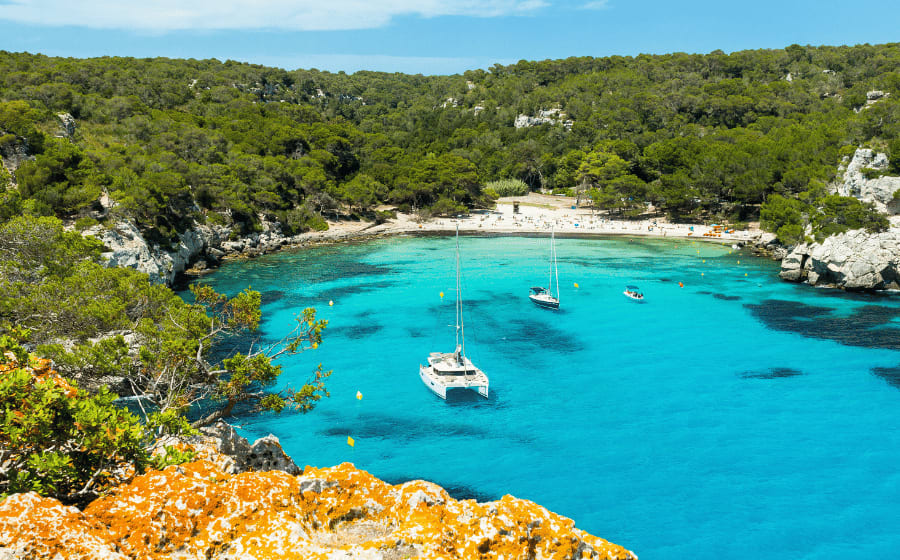The Canary Islands: 8 Beautiful Spanish Islands in Africa
December 13, 2022
Win a FREE Trip to Spain!
Exciting Announcement! For the first time, we're thrilled to offer exclusive trips to the heart of Spain - an experience like no other. This isn't your typical tourist journey; it's a unique opportunity to immerse yourself in authentic Spanish culture, alongside real locals and our passionate team.
But there's more! Simply by requesting information about this amazing trip, you'll be entered into a special draw to win a Fully Paid Trip to Spain for Two. And that's not all - everyone who inquires will receive an exclusive bonus gift, valued at $500, available only now.
Ready to Discover the Real Spain?Click Here ↑ to Request Information & Enter the Draw!
Did you know that you could find all the world’s landscapes in one place? Where? Welcome to the Canary Islands!
This spectacular archipelago is paradise on earth! The Canary Islands have it all: deserted beaches, ancient volcanoes, dense green jungles, breathtaking caves, breathtaking waterfalls, natural swimming pools, rugged cliffs, sand dunes, and coffee plantations!
Everyone who visits any of the islands falls in love! Each one of them has a personality or something special that makes it unique. Besides, the good thing about them is that you can visit them any time of the year! Its unique world biodiversity and incredible natural landscapes make the Canary Islands one of the favorite destinations for national and international tourists.
If you want to know all about the Canary Islands, their eight impressive islands, and some of their most curious facts, keep scrolling down!
P.S.: I’ve also included a map so you can locate them without any problem!
Table of Contents ▼ ▶
What Spanish islands are off the coast of Africa?
The Spanish islands that are off the coast of Africa are the Canary Islands, an archipelago composed of 9 inhabited islands and 157 uninhabited islets, but officially, only 8 islands and 5 islets are recognized.
This archipelago is located west of the coast of Morocco and the Western Sahara.
You should first know that the Canary Islands are divided into two provinces, Santa Cruz de Tenerife and Las Palmas de Gran Canaria.
Santa Cruz de Tenerife includes the western islands of Tenerife, La Palma, La Gomera, and El Hierro. And Las Palmas de Gran Canaria is formed by the eastern islands of Gran Canaria, Lanzarote, La Graciosa, and Fuerteventura.
The Canary Islands is Spain’s only autonomous community with two capitals.
These are the 8 islands in order of number of inhabitants:
- Tenerife
Capital: Santa Cruz de Tenerife

Tenerife is the second-largest Spanish island (after Mallorca) and the most populated. The island has an area of 2,034.38 km2 and has two airports.
Tenerife is a top-rated destination, as well as being the economic center of the Canary Islands. And not only that, this beautiful island is home to Spain’s highest peak, Mount Teide, a National Park and a UNESCO World Heritage Site.
Tenerife has one of the biggest carnivals in the world! If you want to discover everything about the authentic carnival and the best places to experience it, don’t miss this article: The Authentic Carnival in Spain and the 5 Places You Can’t Miss.
- Gran Canaria
Capital: Las Palmas de Gran Canaria
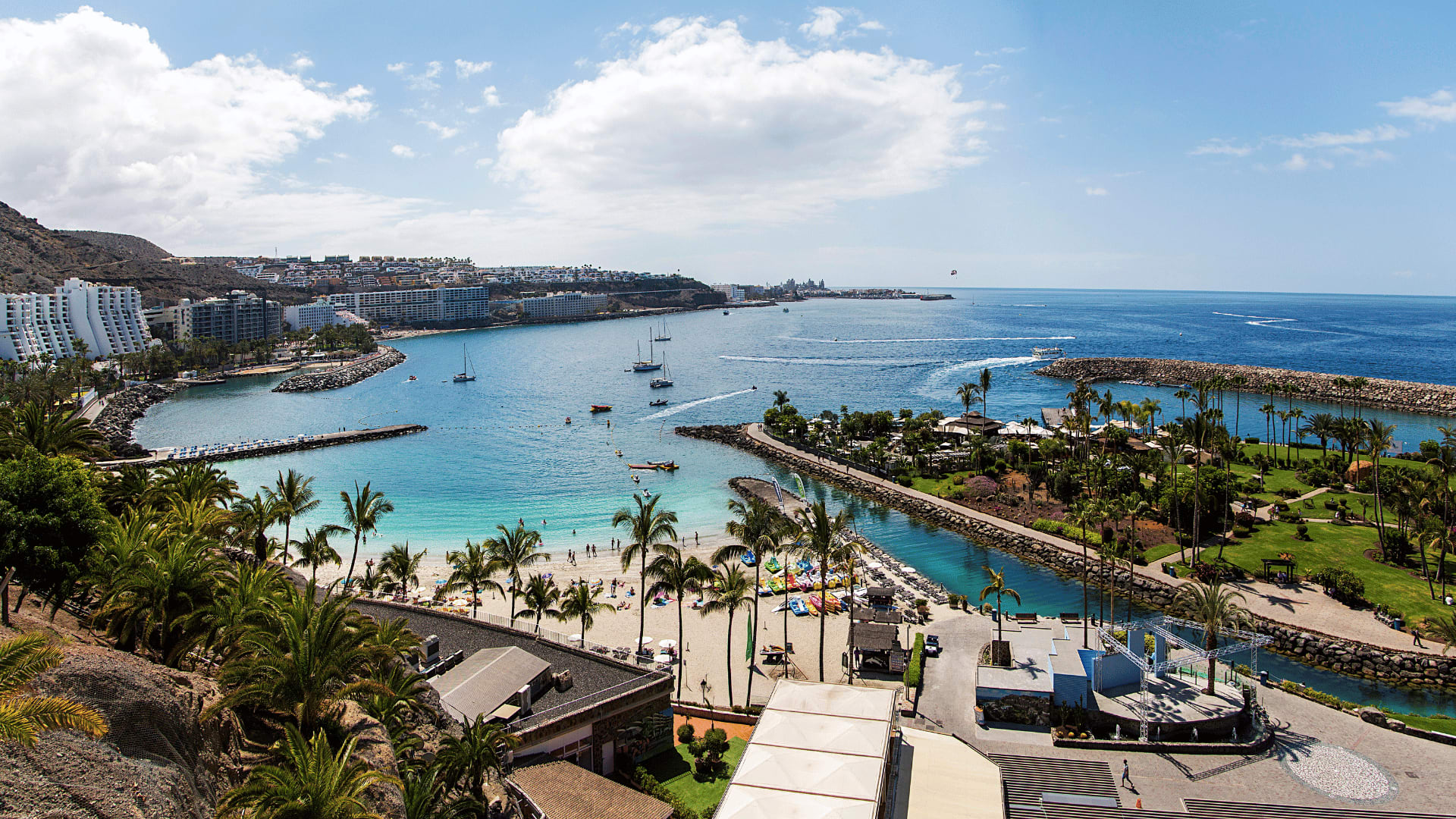
Gran Canaria is the fourth largest island of Spain, with an area of 1,560.10 km2, and is the second most populated island of the Canary Islands after Tenerife.
Like Tenerife, Gran Canaria has stunning beaches. In fact, one of the best urban beaches in the world is located here, in Las Canteras. A place where you will have different shades of sand and can practice various activities and water sports.
In Gran Canaria, you can also find the famous dunes of Maspalomas. There is an article where we will tell you more about them, and you will also discover the Spanish dunes and deserts!
Is Spain a Desert? Get to Know Our Stunning Filmset Landscapes
Gran Canaria is one of Europe’s favorite and most tourist destinations to enjoy the sun and the beach.
This island, like Tenerife, is also very famous for its carnival, one of the island’s most authentic signs of identity.
If you want to enjoy good gastronomy, the inland villages like Teror or Firgas offer exquisite products such as cheeses, wines, and of course, the famous “papas arrugás.”
- Lanzarote
Capital: Arrecife
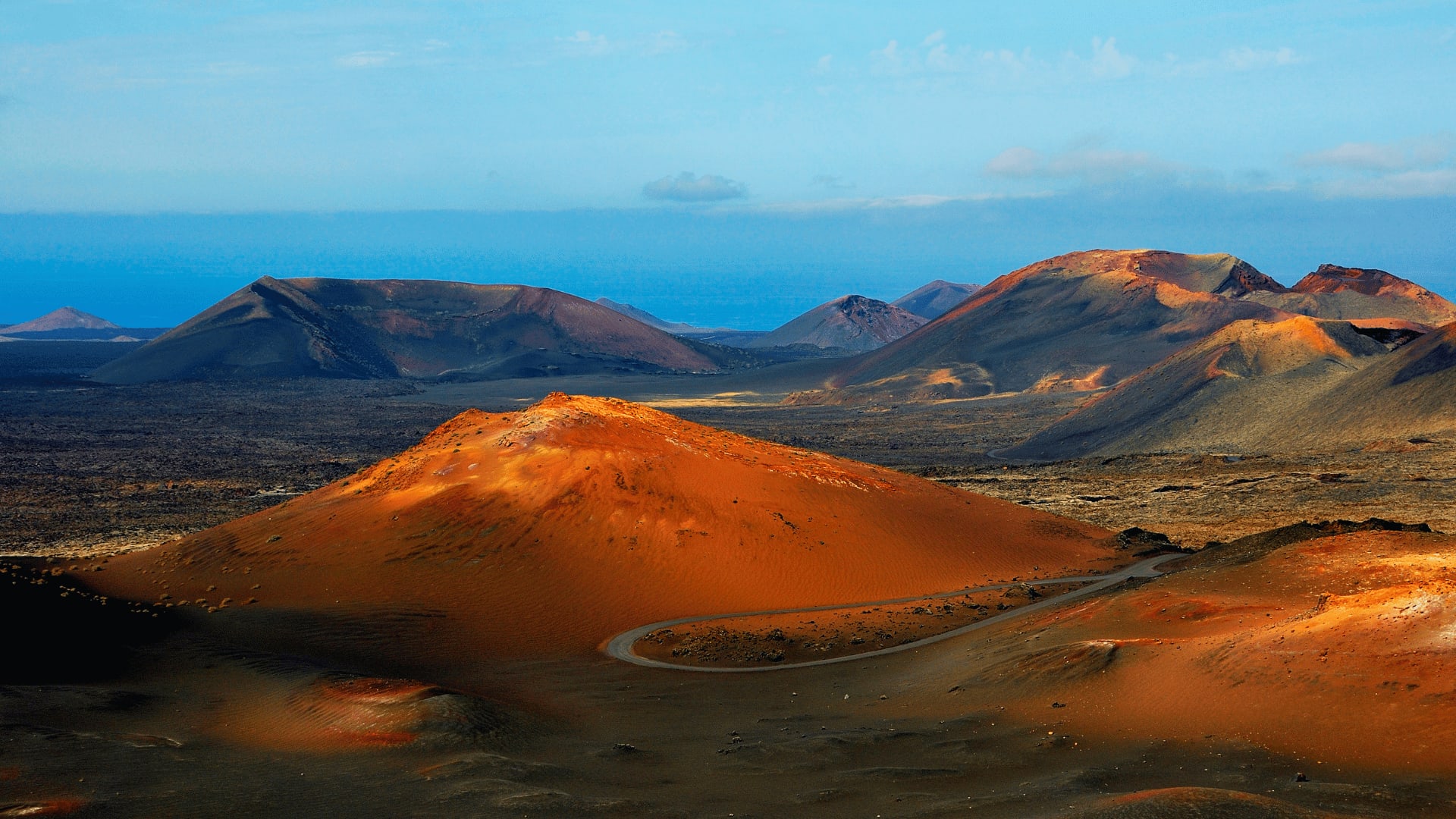
Lanzarote is just spectacular and one of my favorite islands. The volcanic landscapes of this island are surreal; they seem to come out of another planet! This makes it undoubtedly the island’s biggest attraction.
This island is less touristy than Tenerife and Gran Canaria. Still, you have a lot of activities and sports, especially for those who like cycling and hiking.
Lanzarote is the fifth largest island in Spain and the third most populated of the Canary archipelago. It also has stunning beaches of golden sand, spectacular caves such as Jameos del Agua and Los Verdes cave, and a National Park that will leave you breathless, known as the Timanfaya National Park.
In the 17th century, there was a massive eruption of the volcano Timanfaya. After the explosion, there was a lava mantle that today has become a protected natural area.
- Fuerteventura
Capital: Puerto del Rosario

The island of Fuerteventura has an area of 1,659.74 km2, making it the third-largest island in Spain. Its capital Puerto del Rosario was declared a biosphere reserve by UNESCO in 2009.
If you are looking for miles of beaches with crystal-clear waters, Fuerteventura is your island! You will also find charming old villages and very simple resorts on the island.
Suppose you love sailing sports like kitesurfing or windsurfing. In that case, this island is perfect as it has a powerful wind all year round. And if you also like birds, you can enjoy a great variety of species here!
You also have the option to see the stars from the viewpoint of Sicasumbre or the Observatory of Tefía.
Fuerteventura is only 7 km away from Lanzarote, so if you are up for it, you can visit both!
- La Palma
Capital: Santa Cruz de La Palma
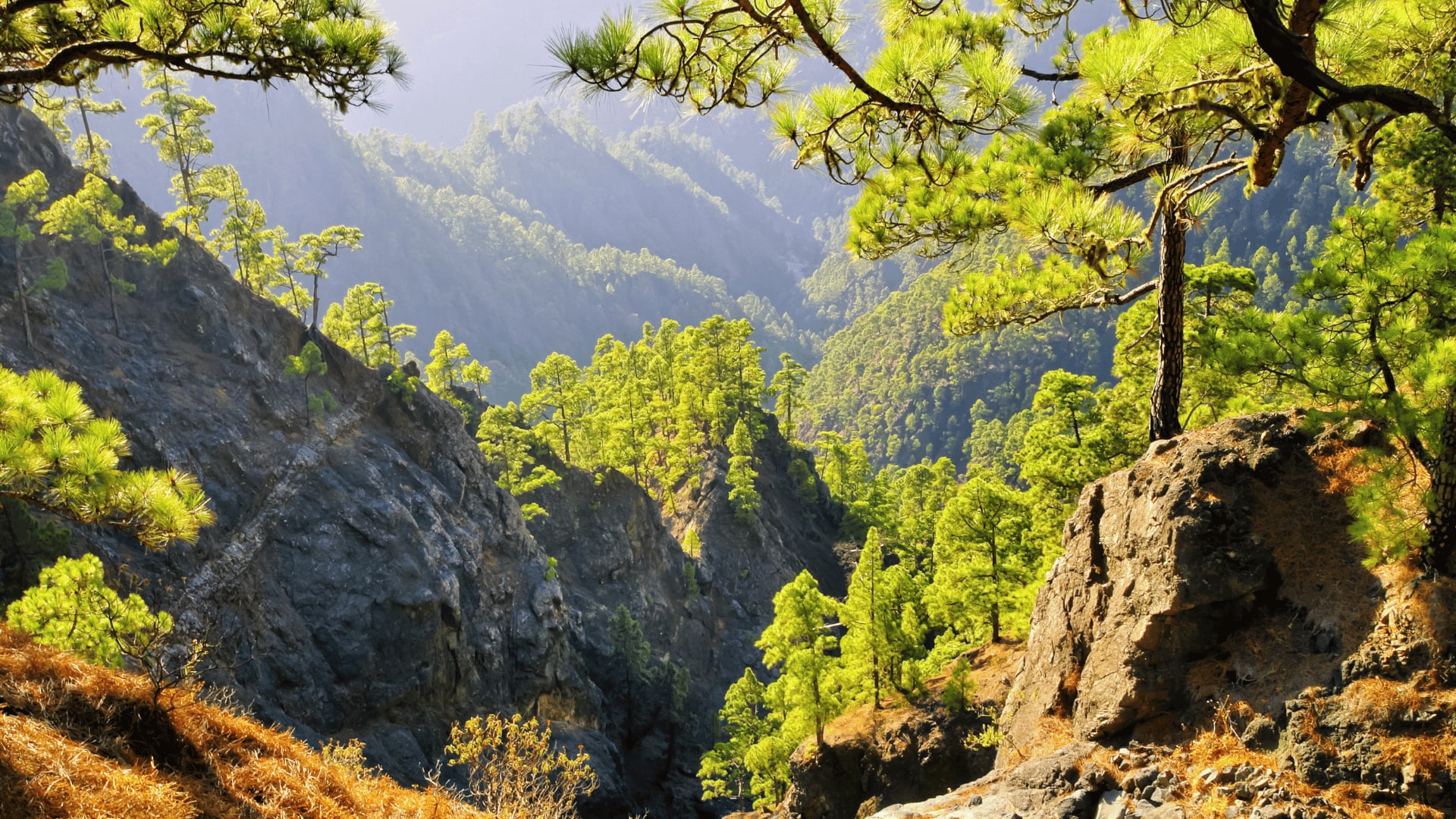
The island of La Palma is also known as “Beautiful Island” (“Isla Bonita” in Spanish). This island’s landscapes are impressive and will leave you speechless!
In its 700 km2 of surface, you will find a great variety of landscapes, among which waterfalls, beaches, mountains, forests, and volcanoes stand out! In La Palma, two places are must-visits, such as the Natural Park of Las Nieves and La Caldera de Taburiente. From the top of both places, you can enjoy unforgettable views!
A curious fact is that in La Palma, there are less than 50 years old lands since they were added to its geography in 1971 after the eruption of the Teneguía volcano.
The city of Santa Cruz was an important place for adventurers going to America and for many pirates.
- La Gomera
Capital: San Sebastián de La Gomera
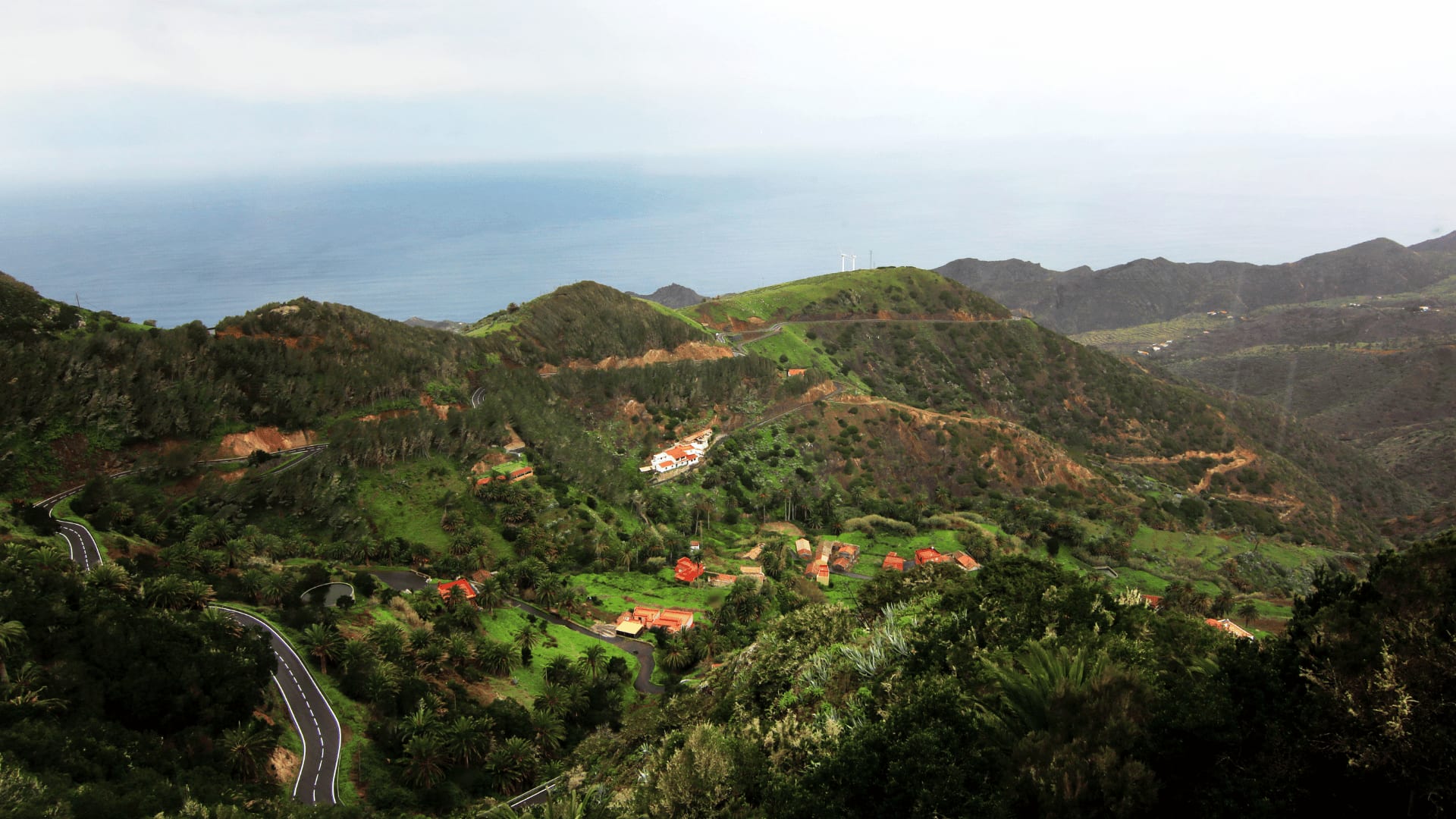
La Gomera is only 39 km west of Tenerife and has a surface of 370,03 km2.
This island offers an exciting history where you can enjoy some of the most typical traditions of the Canary Islands. To this day, inhabitants of the island continue to use the autochthonous language known as “silbero gomero,” which has also been declared a World Heritage Site.
The island is full of old houses and chapels that are still preserved and that make the island unique. I recommend visiting the Torre del Conde, the Casa de Colón, and the Archaeological Museum.
But the island is also characterized by an incredible nature where dense jungles, beaches, mountains, and palm groves abound.
This island can be a perfect choice if you are a hiking lover!
From Tenerife, you have a direct ferry connection.
- El Hierro
Capital: Valverde
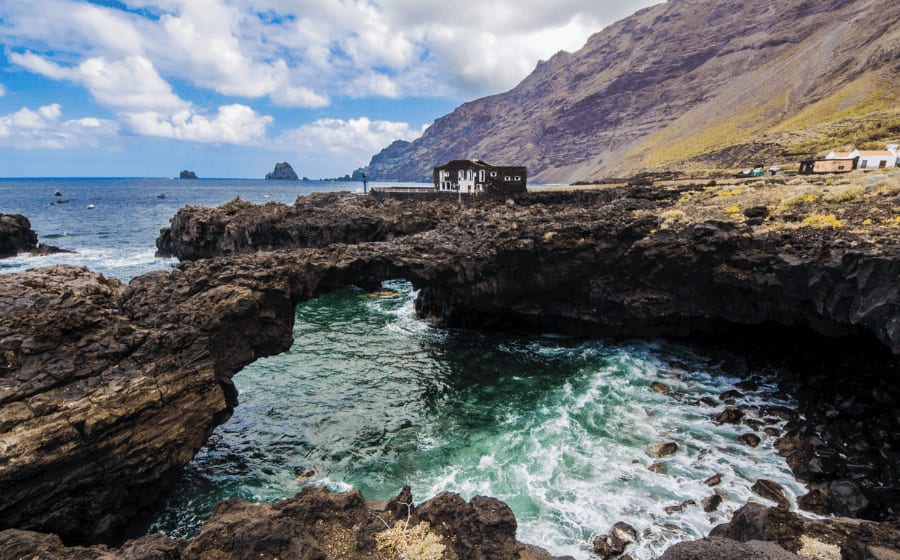
El Hierro is the second smallest of the eight main islands of the Canary Islands, with 268.51 km2.
This island is considered a Biosphere Reserve and stands out for having many sustainable development initiatives.
El Hierro is one of the best and most popular places for scuba diving. It has a total of 46 dive sites where you can enjoy a great variety of marine wildlife.
This island has several hidden gems, so although it is small, I recommend several days to visit it without haste. I recommend you to see the natural pools of La Maceta, the beach of Tacorón, the viewpoints of Izquie or Malpaso, and the beautiful villages like Pozo de las Calcosas or Isora.
If you are looking to disconnect and get away from the crowds, El Hierro can be the place where you can relax and forget about everything!
- La Graciosa
Capital: Caleta del Sebo
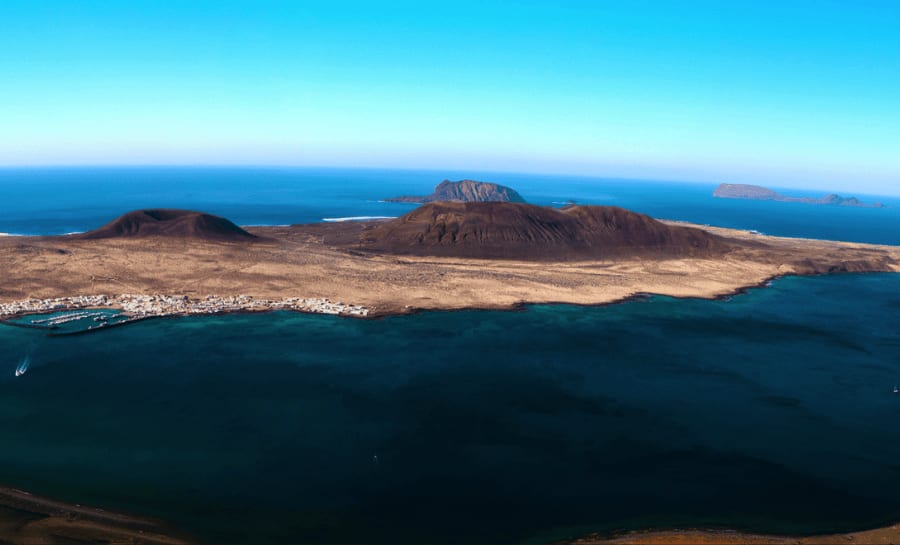
La Graciosa is dependent on the municipality of Teguise (Lanzarote).
It is a small island that hardly reaches 30 km2 and has only about 700 inhabitants. It is located north of Lanzarote and is the only inhabited island of the Natural Park Archipelago Chinijo.
On June 26, 2018, La Graciosa was officially recognized as the eighth inhabited island of the Canary archipelago.
Like the rest seen above, this island stands out for its virgin beaches of turquoise waters and its exceptional climate.
But what most characterizes the island is that it has no paved road, so the best way to get around it is by bike or on foot.
I recommend you to visit the Montaña Amarilla and the Natural Park of the Chinijo Archipelago.
The best way to get there is by ferry from Lanzarote.
These are the 5 main islets:
- Alegranza
The islet of Alegranza is located north of the island of Lanzarote. It has a surface of 10.2 km2, making it the largest islet of the Canary Islands archipelago.
First, you should know that this island has been uninhabited since 1968 and receives very few visitors. Scientists are the ones who usually visit this islet since access is forbidden and a permit is required.
Alegranza is protected by the Natural Park of the Chinijo Archipelago and is also a recognized area of special protection for birds (ZEPA).
If you are a bird lover, we have two posts dedicated exclusively to Spanish species:
Alegranza is the first obstacle crossed by the Canary Current, and that’s why it has gone from being a natural paradise to a garbage dump.
- Montaña Clara
It is the smallest islet of the Chinijo Archipelago with an extension of 2.7 km². Its highest point is 256 meters and is known as La Mariana.
Montaña Clara is located in the north of Lanzarote, between La Graciosa and the islet of Alegranza.
This islet has never been permanently inhabited and remains an important wildlife refuge, mainly for birds of prey, such as the guincho, the osprey, and Eleonora’s falcon.
- Roque del Este
It is located 12 km northeast of Lanzarote and is the easternmost point of the Canary Archipelago.
Like the rest of the Canary Islands, this islet is of volcanic origin.
On its surface with an inverted L-shape, there are two heights. The highest is 84 meters, located to the north, and the lowest is 63 meters, located at the southern end.
Roque del Este is uninhabited and is part of the protected areas of the Natural Park of the Chinijo Archipelago and the Integral Natural Reserve of the Islets.
Although it is a tiny islet, there are some plants, and as for its fauna, the most prominent animal is the lizard. But undoubtedly, what is most striking is the incredible marine fauna! Here you can find up to 228 marine species.
- Roque del Oeste
This islet is also known as Roque del Infierno or Roquete. It is located north of Lanzarote and northwest of Montaña Clara, about 600 meters.
Politically, it belongs to the municipality of Teguise. Like the islets mentioned above, it is part of the Natural Park of the Chinijo Archipelago and the Integral Reserve of Los Islotes.
Roque del Oeste has a surface of 15.765 m2 (255 meters long and 41 meters maximum height). It is practically inaccessible, which makes it uninhabited.
Despite its small size, we can find some plant species, but no animal species have been recorded. Although it indeed has varied and exciting marine fauna.
- Lobos Island
Its name is because it was inhabited by monk seals, also known as sea lions, at some point in history.
This islet, of 4.68 km², is located in the Bocaina Channel, northeast of the island of Fuerteventura (about 2 km) and 8 km from Lanzarote. Its highest point is the volcanic cone of La Caldera (127 meters).
Lobos Island was one of the first natural areas of the Canary Islands to be protected, following the declaration of the natural park “Dunes of Corralejo and islet of Lobos” in 1982.
This island is home to more than 130 plant species and several species of marine and migratory birds, some of them in danger of extinction. Its seabed contains a great ecological richness and constitutes an underwater reserve.
A fact that I found funny is that in 2021 Isla de Lobos had only one resident in the official census!
Here’s a map so you can locate the Canary Islands well and know exactly where they are!
If you want more complete information about these and other Spanish islands worth visiting, don’t miss this article!
The Canary Islands do not belong to Africa but to Europe. Still, I think it is interesting for you to know that Spain has some islands and part of its territory on the African continent. If you are interested, we have a post dedicated to it: Is Spain in Africa? The 5 Spanish Territories in The African Continent.
9 Interesting Facts about the Canary Islands
The Canary Islands will never cease to amaze you! Each of its islands has something that makes it unique.
Let’s discover some of the most curious facts hidden in this archipelago!
1. The Canary Islands are the only place in Europe where coffee is grown
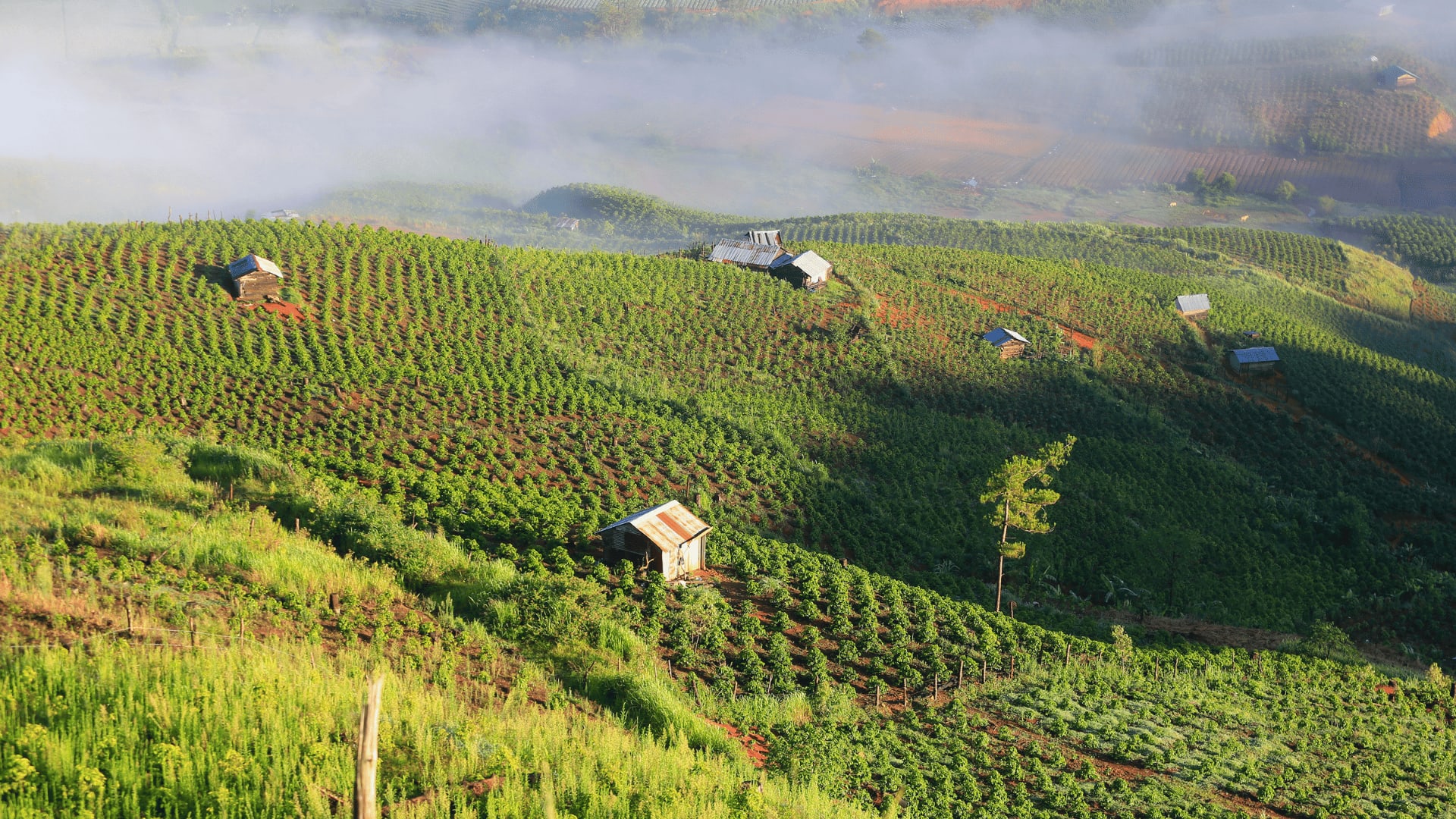
The only coffee in Europe is grown and produced in the Canary Islands, more specifically in the northwestern part of the island in the municipality of Agaete (Gran Canaria).
This is the perfect place due to the climatic conditions of this region, where the temperatures do not fall below 18 and 17 degrees Celsius and where it does not rain much. In addition, the volcanic terrain where it is located has the ideal characteristics to produce exquisite coffee.
2. The highest peak in Spain is located in the Canary Islands
Teide is the highest peak in Spain, with a total of 3,715 meters. This peak is considered a National Park located in the Canary Islands, on the island of Tenerife. It is also the third highest and most voluminous volcanic structure on the planet, after Mauna loa and Mauna kea in Hawaii.
3. Europe’s first underwater museum is in the Canary Islands
The island of Lanzarote has the first underwater museum in Europe, inaugurated in 2017.
In this curious and original museum, you will find about 300 concrete sculptures of the British artist Jason deCaires.
If you come to the Canary Islands and are a diving lover, this unique place must be visited! Besides enjoying the underwater museum, you will also be able to observe a great variety of aquatic species, among which barracudas, octopuses, and some kinds of sharks stand out.
4. The smallest hotel in the world is in the Canary Islands
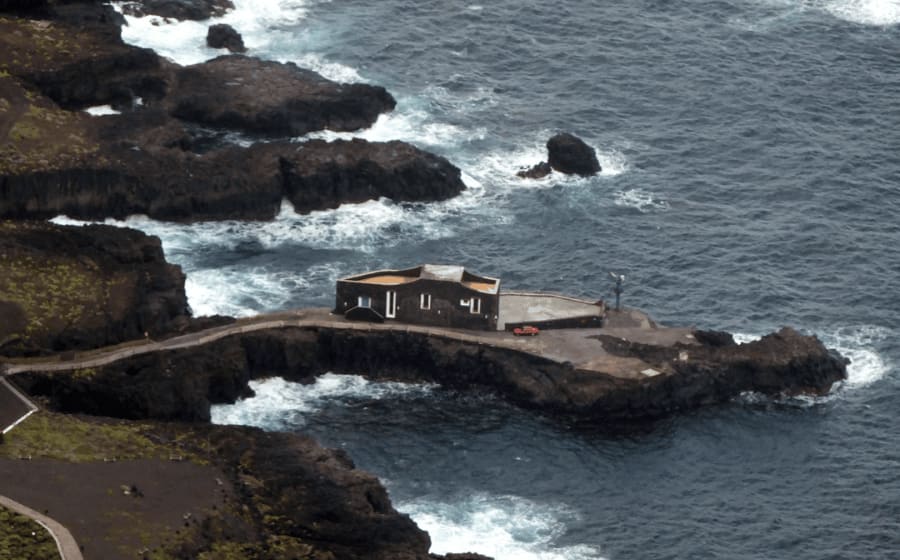
The smallest hotel in the world is located on the remote island of El Hierro in the Canary Islands. This hotel, known as Puntagrande Hotel , appears in the Guinness World Records book for its size, with a height of 9 meters and only 600 m2 built.
The capacity for guests is relatively small as it only has four double rooms.
You will be amazed by the place where the hotel is located as it is surrounded by an impressive rocky landscape and the sea right in front! Also, the hotel has a maritime air since shipwrecks have been used for decoration.
If you decide to visit this curious hotel, do not expect any luxury as the rooms have no TV, internet, or minibar… But it is the perfect place to disconnect!
A night at Hotel Puntagrande can cost around 80€.
5. The oldest rum factory in Europe is in the Canary Islands
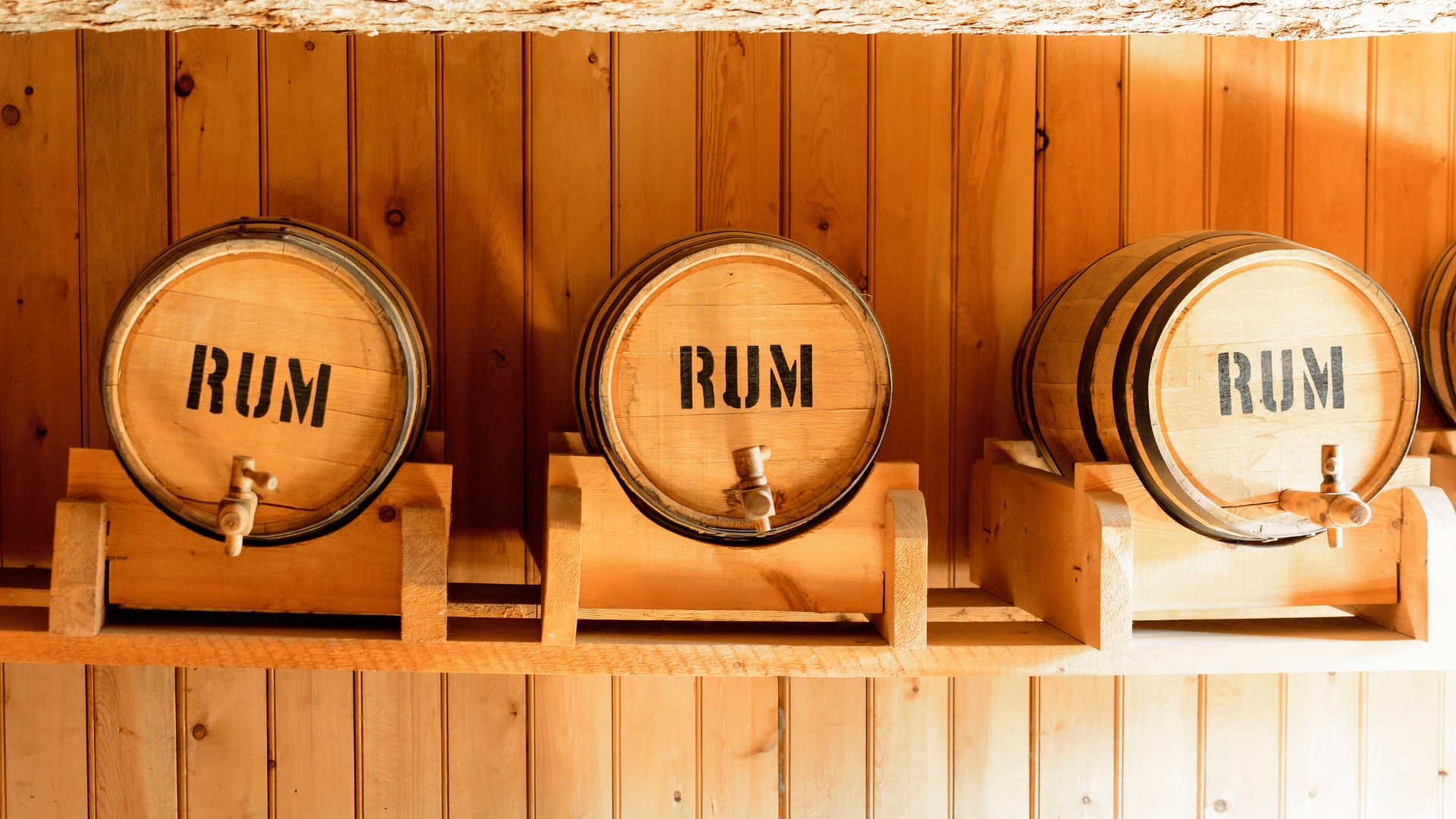
It may surprise you, but the oldest rum factory in Europe is located on the island of Gran Canaria, more specifically in the town of Arucas.
The famous rum of this region is called Arehucas, and it has more than 136 years of history, being bottled since 1884. This drink, made from sugar cane, has become one of the most sold in the Canary Islands and most of Spain.
If you travel to this island, I recommend you visit the Arehucas Distilleries. Here you will enjoy a tremendous sensory experience since, in addition to Arehucas rum, you can also try a wide range of liqueurs such as honey rum.
6. The Canary Islands are the autonomous community with the most National Parks in Spain
The Canary Islands is the region with the most national parks in the country.
The best known is the Teide National Park, on the island of Tenerife, where the highest peak in Spain is located.
On the island of La Palma, we can find the National Park of Caldera de Taburiente, where the “Roque de Los Muchahos” is located, known as the island’s highest peak.
On the island of La Gomera is located the Garajonay National Park, which occupies 10% of the island’s surface with its incredible laurel forest. And the 4th Park is the spectacular Timanfaya National Park, which seems to be from another planet and is located on the island of Lanzarote. In this Park, there are a total of 25 active volcanoes!
7. The Canary Islands have two Astronomical Observatories
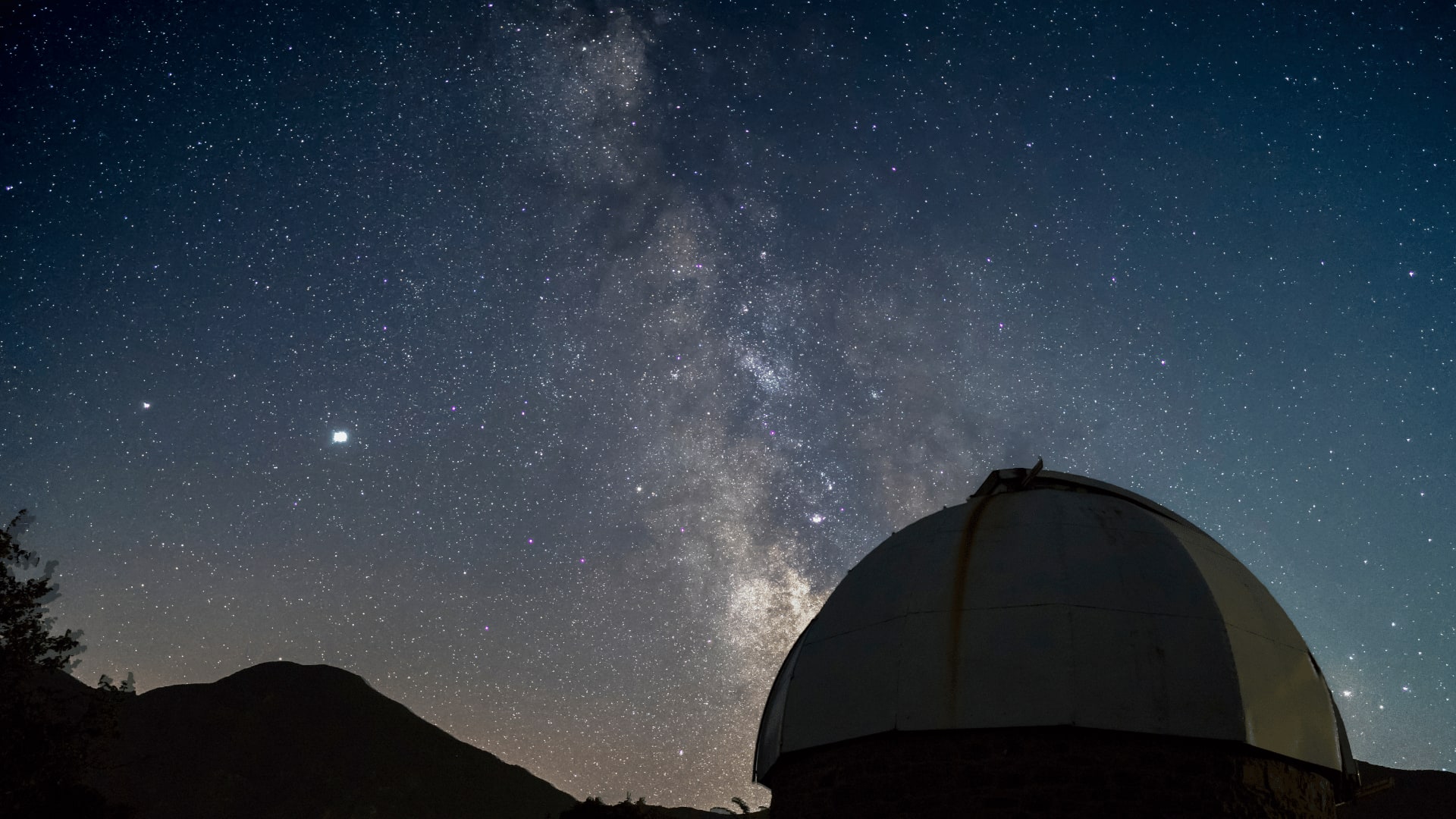
Attention stargazers! The Canary Islands have two great observatories, one on the island of Tenerife (on the Teide), and the other in La Palma (at Roque de los Muchachos). These two islands have skies considered some of the cleanest on the planet, especially La Palma.
So if you want a sky full of bright stars and even visualize and photograph the Milky Way, La Palma is one of the best places in the world!
8. The submerged archipelago of the Canary Islands
After several exploration campaigns, Spanish scientists have discovered a group of 8 submerged islands southwest of the Canary Islands. These islands, located in the Atlantic Ocean, have a size and shape very similar to the Canary Islands. They have been named the “geological grandmothers.”
These 8 new islands are added to the other 5 already known underwater islands.
Drago, Garoe, Ico, or Bimbache are the names the International Hydrographic Commission has proposed for some underwater mountains.
And you know what? On one of the islands submerged 300 meters below sea level, there is a mountain that is the size of Teide!
According to experts, the current Canary Islands will remain underwater if the hot spot that generated them disappears. This is precisely what happened with the submerged islands that were once out of the water and, over the years, sank as the earth’s crust cooled. But for now, there is nothing to worry about, as this will happen in millions of years!
9. One of the Canary Islands has all its roads made of sand
La Graciosa is an island belonging to the archipelago of the Canary Islands that does not have any paved roads, so all of them are sandy. This makes the island a fabulous paradisiacal and super virgin beach!
What’s the language of the Canary Islands?
In the Canary Islands, as in all of Spain, the official language is Spanish. But you will also find many people speak English, being the second most spoken language, and some people understand German.
Although you should know that the inhabitants of the Canary Islands speak a particular type of Spanish, which resembles the Caribbean, and is the result of Portuguese, French, Arabic, and English influences. The language has also been influenced by the aboriginal Canary Islanders who inhabited the archipelago before its conquest.
There are certain variations in some of the words concerning the rest of Spain. For example, the letters C and Z, followed by I and E, are pronounced as an S, and they also say “ustedes” instead of “vosotros.”
As I mentioned at the beginning, the Canary Islands have a great variety of landscapes. If you want to discover some of the most beautiful and also present in other regions of Spain, do not miss this article!
7 Different And Incredible Landscapes You Will Find in Spain
And if you also want to enjoy some of its caves and forests, I recommend you take a look at these articles:
Did you know all this about the Canary Islands? I have really been surprised by many of the things these islands have to offer! It’s a place you must add to your bucket list, and you can’t miss it if you have the chance!



